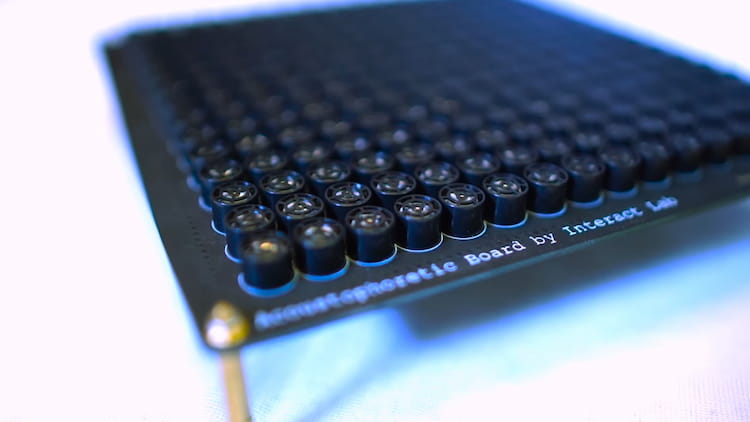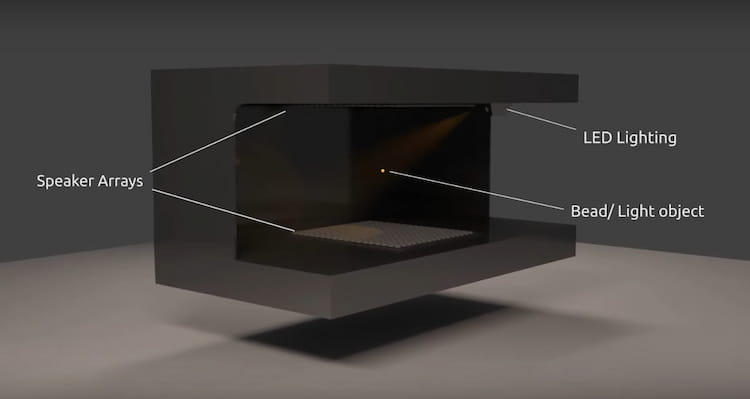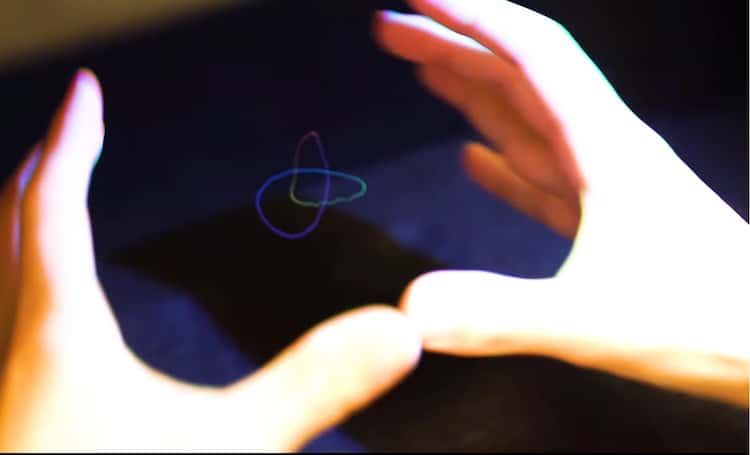Researchers have created 3D images with the help of acoustic levitation of a polystyrene bead.
3D images made from sound. Say what?!
Yes, you’re reading that right. Researchers from the University of Sussex, UK, have managed to create real 3D images by levitating a tiny bead made of polystyrene (foam). This is done by using a Multimodal Acoustic Trap Display (MATD). This invention was attributed to Ryuji Hirayama, Diego Martinez Plasencia, Nobuyuki Masuda, and Sriram Subramanian. They undoubtedly managed to captivate us with this futuristic device that feels like it came right out of a Star Wars movie.
How does it work?
Researchers call it “a levitating volumetric display.” The device can simultaneously deliver visual, auditory, and tactile content, using acoustophoresis as the single operating principle”. This finding was published as an article in ‘Nature’.
By employing the MATD, a small and light foam bead levitates with the help of specialized speakers that deliver the required frequency and volume to keep it stable in the air. Arrays of small speakers fill the whole top and bottom areas of the apparatus. Hence, the bead is trapped inside the machine while allowing free movement.

By moving and vibrating the bead at high speeds, it creates the optical illusion of complex 3D shapes. Similar to how cartoon characters’ frames move fast enough to create fluid movement.

This comes with a few advantages. First, it allows the free manipulation of the sound parameters, This translates to different movements of the bead, and consequently the creation of any image.
Second, it gives optional auditory content, in the sense that you can hear the sound of what you see. Other than that, you can freely touch the bead, without damaging the machine or getting hurt at all. But you would ruin the “image” by doing that.

Let’s take it one step further
What else could the scientists do to make this invention even better? More beads and RGB lights, of course!
By adding more beads, the images can get more complex and more realistic. This makes it possible to represent 3D renderings in real life. The experiment demonstrates that it is possible to control multiple elements at once in perfect harmony. The secret behind this, is the tracking mechanism of the levitating elements that allows precise control and flexibility.
Finally, by adding RGB lights to the machine, the fast-moving beads are illuminated by reflecting that projected light. This is easy since they’re colored white, and we know that white color reflects all colors. This little touch upgrades the “image” and gives it more rich and complex structures. Such as a colored butterfly flying around.
What’s next?
As you can imagine, the possibilities of what you can do with this machine are endless. Just imagine how things could improve on a commercial scale. Maybe we’ll have hologram ‘Yu-Gi-Oh!’ duels, hologram communications, or even hot strippers dancing on our tables.
Other applications could take place in medicine, such as accurately displaying the patient’s body to the doctor. This would make possible remote surgeries by performing the operation on a 3D patient. Civil engineering and architecture could also benefit from this with realistic 3D structures. In short, every engineering field could benefit from this technology. If, somehow, haptic feedback could be added without disrupting the “image”, that would be a game changer.
Conclusion
The Multimodal Acoustic Trap Display (MATD) is an invention that has much potential for various applications. Even though it’s in an early stage, it is more than we could ask for. I don’t know about the future, but I suspect it’s going to get much more exciting when this technology is scaled up.
Have you ever heard of this invention before?
Please, let us know in the comments, and subscribe & follow us for more.





Comments
Loading…